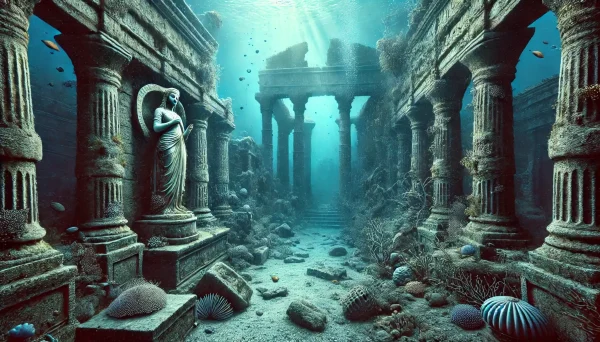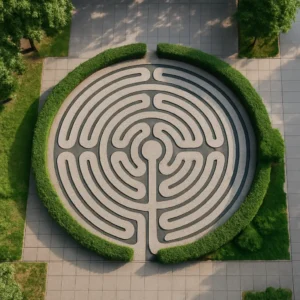Beneath oceans, lakes, and rivers around the world lie the remnants of entire cities—once thriving centers of culture, commerce, and life. These sunken cities, often lost due to natural disasters, rising sea levels, or human intervention, hold mysteries that fascinate archaeologists and storytellers alike. As divers uncover streets, temples, and homes buried underwater, they reveal not only ancient civilizations but also powerful reminders of how nature and time can reshape history.
1. Heracleion – Egypt
Known as the “Egyptian Atlantis,” Heracleion was an important port city near the mouth of the Nile. It was once larger than Alexandria and served as a gateway to Egypt for Greek traders. Around the 2nd century BC, it mysteriously vanished beneath the Mediterranean, likely due to earthquakes and liquefaction of the soil. Rediscovered in 2000, the city has yielded statues, coins, temples, and entire shipwrecks—preserved in remarkable condition after over a thousand years underwater.
2. Shicheng – China
Dubbed the “Atlantis of the East,” Shicheng is a 1,300-year-old city submerged beneath Qiandao Lake in Zhejiang Province. It was intentionally flooded in 1959 to create a hydroelectric dam. Today, the city lies 40 meters below water, with stone roads, temples, and archways perfectly preserved. Divers exploring the site find an eerie underwater ghost town, frozen in time.
3. Port Royal – Jamaica
Once called “the wickedest city on Earth,” Port Royal was a notorious pirate haven in the Caribbean during the 17th century. In 1692, a massive earthquake followed by a tsunami sank much of the city into the sea. Streets, buildings, and artifacts now lie beneath Kingston Harbour. Underwater archaeology continues to uncover taverns, shipwrecks, and personal items that tell stories of a decadent and dangerous past.
4. Dwarka – India
According to Hindu mythology, Dwarka was the golden city founded by Lord Krishna. For centuries, it was thought to be purely legend—until underwater ruins were discovered off the coast of Gujarat. Dating back over 9,000 years, these submerged structures challenge current historical timelines. Some scholars debate their true origin, but Dwarka remains one of the most spiritually and archaeologically significant underwater sites.
5. Pavlopetri – Greece
Located just off the coast of southern Laconia, Pavlopetri is believed to be the oldest known submerged city in the world. Dating back more than 5,000 years, the city features well-preserved roads, buildings, courtyards, and tombs. It likely sank due to earthquakes and rising sea levels. Its discovery has helped researchers understand early urban planning and Mycenaean civilization.
6. Lion City of Thonis – Egypt
Not to be confused with Heracleion, Thonis was a part of the ancient twin city complex and served as a hub for religion and trade. Submerged for over 1,200 years, the city was rediscovered along with Heracleion. Gigantic statues, stone tablets, and temple ruins are now being carefully brought to light by underwater archaeologists.
7. The City of Baiae – Italy
Once a luxurious Roman resort city for emperors and the elite, Baiae was famous for its hot springs, villas, and lavish architecture. Due to volcanic activity and gradual sinking (bradyseism), much of the city now lies underwater in the Bay of Naples. Visitors can snorkel or dive to see preserved mosaics, statues, and ancient roads under the sea.
8. Atlit Yam – Israel
This prehistoric village near Haifa is over 9,000 years old and now rests beneath the Mediterranean Sea. It was discovered in the 1980s and features stone houses, wells, and even a megalithic structure. Some researchers believe a tsunami caused by a volcanic eruption led to its sudden submersion. Atlit Yam offers one of the most complete snapshots of Neolithic life ever found.
9. Old Adaminaby – Australia
In the 1950s, the original town of Adaminaby was flooded to create Lake Eucumbene as part of a hydroelectric project. Today, the lake occasionally recedes, revealing the ruins of buildings, fences, and streets from the old town. It’s a rare chance to walk through a modern ghost town submerged by human planning.
10. Canudos – Brazil
The city of Canudos was destroyed and flooded in the 20th century after a bloody conflict between the Brazilian army and a group of settlers led by religious leader Antônio Conselheiro. A dam built in the 1960s submerged the entire area. In times of drought, the remains of the church and other buildings reemerge, reviving memories of a dramatic and violent past.
Conclusion: The Cities Beneath the Surface
These submerged cities tell powerful stories of human resilience, environmental change, and the fragility of civilization. Whether lost to natural disaster or buried for infrastructure, they continue to fascinate and remind us that history often lies just beneath the surface—waiting to be rediscovered. As technology advances, we may uncover even more underwater worlds, silent but rich with forgotten voices of the past.







